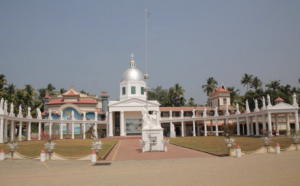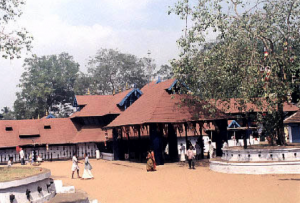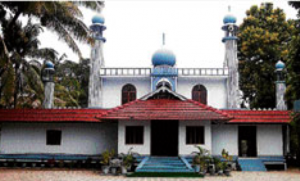Oneness. What is it? Is it possible? There are many creeds and doctrines which espouse the idea that all of creation is one in God, but if that is so, why are there so many traditions which say that their god is the only one and all other beliefs are wrong? We live in a world of infinite diversity, so how can we be one in that multiplicity of experience? As I study human history, one thread which weaves through all epochs is mankind’s reaching out to the Divine. The character of that Divine and the rites and rituals for worship vary from culture to culture, however, seeking this Presence unifies human experience from its earliest moments to present day.
Due to cultural differences in defining the Divine, this desire to connect with it has been the source of great suffering for humanity. Religious warfare between groups who identify divinity differently has fomented hatred and retribution which continues for centuries. However, over the millennia sacred devotion also has inspired many beautiful traditions which express love for God and is the source of art and architecture, music and dance, and literature and poetry. History has moments in which people of different sacred traditions lived together in relative harmony, and in these moments I find the fragrance of Oneness within the diversity of human experience.
In one place in particular, the Malabar Coast of present day Kerala, India, spiritual devotees of different traditions have lived together relatively peacefully for thousands of years. Today the state government is sponsoring the Muziris Heritage Project, aimed at the preservation and restoration of heritage sites in central Kerala which convey the area’s rich religious history. “Temples, synagogues, churches, mosques, and palaces link more than 2,000 years of Kerala’s history.”1 In India, a land of spirituality, where religious devotion has inspired atrocities and sublime art, I find the rich history of the Malabar Coast enlightening and encouraging.
King Solomon is said to have traded here for black pepper in 10,000 BCE, and the spice trade flourished in this area for thousands of years. Greeks, Romans, Jews, Arabs, and Chinese passed through Muziris bringing with them their cultures and traditions.2 “For 3,000 years this region attracted merchants, fishermen, and settlers from abroad. Unlike almost anywhere else in India, or other parts of the world these outsiders were generally welcome by Kerala’s people and rulers. Trade and attitudes open to other peoples brought long periods of peaceful existence and a unique society.”3

Kerala Jewish History Museum
The 8th C BCE was the beginning of Jewish migrations to the Malabar Coast. The first migration was due to the Assyrian dispersion, which was followed in the 6th C BCE by the Babylonian dispersion and Roman persecution. In 70 CE (or 135 CE according to another source) when the Romans destroyed the Second Temple of Jerusalem, the Jews were againdispersed, and a colony was established in Muziris and nearby Kodungalloor.4 Over the centuries they built several synagogues including the Chendamangalaman Synagogue which was constructed on land given to them by the Christian king of the local fiefdom.

Malankara Mar Thoma Syrian Church
Because of the presence of this thriving Jewish community, St. Thomas, one of Jesus’ original apostles, arrived in Kodungalloor in 52 CE. He established seven churches in the area including the Malankara Mar Thoma Syrian Church which has had an active congregation every since. The first Christian church in India, the religious practice is of the Eastern Orthodox tradition and is one of the oldest denominations in Christianity. According to its website the church defines itself as “Apostolic in origin, Universal in nature, Biblical in faith, Evangelical in principle, Ecumenical in outlook, Oriental in worship, Democratic in function, Episcopal in character.”5 Because of the presence of St. Thomas, Malankar Mar Thoma Church became a popular Christian pilgirmigage site in the 4th CE and remains so today, attracting thousands from all around the world, irrespective of caste and creed.6

Shree Kurumba Bhagavati Temple
When St. Thomas arrived in 52 CE there was a thriving Hindu community as well as a Jewish colony. Due to a 200 year drought in the Indus Valley, Dravidians and Hindus migrated from the north to south India, arriving in 5th C BCE.7 Constructed sometime between 500 BCE – 200 CE, the Shree Kurumba Bhagavati Temple, also located in Kodungalloor, is one of the most ancient temples in India, incorporating some Dravidian rituals in its Hindu ceremonies, and worship here has been practiced continuously to the present day.8 It is the site of many religious festivals including the grand monthlong Bharani Festival in honor of Kali, to whom the temple is dedicated.
One more piece of religious history which I want to share about this unique culture within India concerns the arrival of Islam. Because of its significance on the spice trade route, merchants from Europe and Asia visited Muziris. In the early 7th C CE Arab traders arrived on the Malabar Coast and brought with them stories of the new message being delivered by the Prophet Muhammed. Cheraman Perumal was the Chera king at the time. He had a dream of the new moon being split in two, but could not get a meaningful interpretation of the dream until he met two Arabs who suggested that it could refer to the spiritual work of the Prophet who was alive and active in Arabia. Perumal was so moved by what he was told that he divided his kingdom among local chieftains and went to Mecca where he met the Prophet. He renounce his Hindu religion and became a devout disciple of Islam.9

Cherman Juma Masjid
Perumal lived in Arabia for some years. On his journey home he died but not before he gave instructions to his loyal companion Malik Bin Dinar to request the local chieftain in Kodungalloor to build a mosque dedicated to Allah. The Hindu chieftain gave him an abandoned Buddhist shrine on which to build the mosque. It was completed in 629 CE, during the life time of Muhammed. Malik Bin Dinar became the first Ghazi of Cheraman Juma Masjid which is the oldest mosque in India, and like the Shree Kurumba Bhagavati Temple and the Malanka Mar Theme Syrian Church, has been the site of continuous worship since its inception.10
This is a lot of historical information, but I feel that it is important to know the history to grasp the remarkable community which unfolded in this area. After the state of Israel was established in the 20th century, the Jewish population left and moved to their homeland, but until that time actively practiced their faith. Today, the population of Kerala is 60% Hindu, 20% Muslim, and 20% Christian.11 Although each of these religious communities is distinct, there are cultural traditions which they share. One of these is that called Vidayarambham, a ceremonial right of passage in which children are formally introduce to learning, especially of music, dance, languages, folk arts and the alphabet.12
As I have learned about these practices and the thousands of years of relative peace among these peoples I have tried to understand what supported this harmony and what can we learn from it. As a trade center for 3000 years, the region attracted outsiders from all parts of the world who were welcomed by the local rulers and people. This brought long periods of peaceful existence13, and tolerance within all layers of society was an important factor in this cultural harmony. Tolerance allowed citizens to build an Islamic mosque atop a Buddhist shrine, for devotees of Christianity, Islam and Judaism to practice their traditions side by side, and for all of these traditions to embrace a Hindu festival dedicated to learning. In this history and these communities I find hope. Despite the outward differences in their spiritual practices, these people have lived in relative harmony for thousands of years, offering the world a practical example of unity in the midst of diversity. To me, that is Oneness at work in the world.
- The Tribune, January 15, 2017, Muziris: a Flavorful Spice History.
- Wikipedia:North Paravur
- PBS website: “Hidden India:The Kerala Spicelands”
- Thomaskutty, Johnson, New Testament Scholarship Worldwide, November 12, 2012
- Malankara Mar Thoma Church website
- Ibid.
- Thomaskutty, Johnson, New Testament Scholarship Worldwide, November 12, 2012
- Wikipedia: Kodungallur Bhagavathy Temple
- Deccan Herald, March 21, 2017, Oldest Indian mosque sets new precedent
- Ibid.
- PBS “Hidden India: the Kerala Spicelands.”
- Wikipedia: Vidyarambahm
- Ibid

